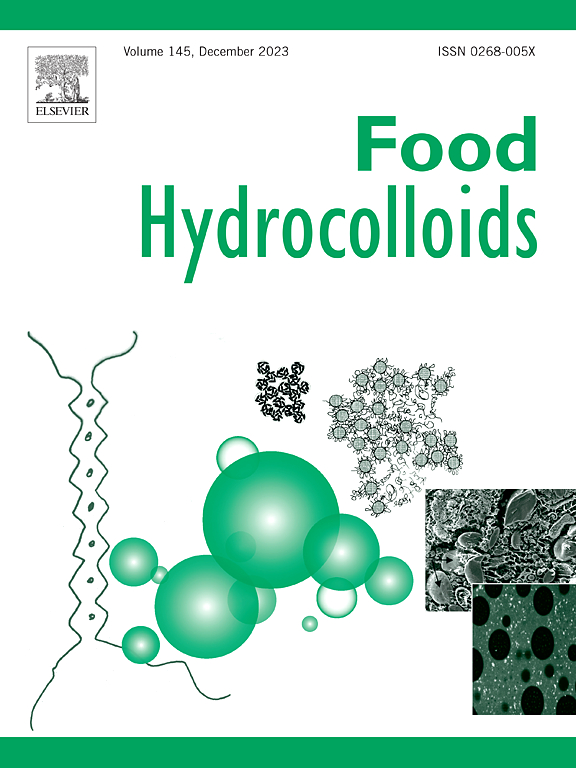Regulation of amylose content and amylopectin chain length distribution in gel digestion of different concentrations: Microstructure-based analysis
IF 11
1区 农林科学
Q1 CHEMISTRY, APPLIED
引用次数: 0
Abstract
The fine structure of starch is a key factor in controlling its gel structure and digestibility. However, its regulatory effects under different concentration systems remain unclear. This study explored the effects of amylopectin chain length distribution on gel structure and digestibility at low (12.5 %) and high (40 %) concentrations. In the 12.5 % concentration system, despite partial degradation of long amylopectin chains, the higher amylose content contributed to maintaining strong gel strength by forming a compact network structure, limiting excessive swelling of starch granules, and reducing digestion rates. In contrast, in the 40 % concentration system, the release of amylose was restricted, and the presence of long amylopectin chains enhanced gel stability. However, steric hindrance inhibited enzymatic activity, resulting in lower digestibility. Moreover, the higher amylose content compensated for the increased initial digestion rate caused by an excess of amylopectin A chains. Thus, the influence of amylopectin chain length on gel structure and digestibility is concentration-dependent. The distribution of amylopectin chain lengths and amylose content not only determines the microstructure of the gel but also significantly affects starch digestibility. These findings provide important theoretical insights for regulating the quality and nutritional properties of starch-based gel foods.

求助全文
约1分钟内获得全文
求助全文
来源期刊

Food Hydrocolloids
工程技术-食品科技
CiteScore
19.90
自引率
14.00%
发文量
871
审稿时长
37 days
期刊介绍:
Food Hydrocolloids publishes original and innovative research focused on the characterization, functional properties, and applications of hydrocolloid materials used in food products. These hydrocolloids, defined as polysaccharides and proteins of commercial importance, are added to control aspects such as texture, stability, rheology, and sensory properties. The research's primary emphasis should be on the hydrocolloids themselves, with thorough descriptions of their source, nature, and physicochemical characteristics. Manuscripts are expected to clearly outline specific aims and objectives, include a fundamental discussion of research findings at the molecular level, and address the significance of the results. Studies on hydrocolloids in complex formulations should concentrate on their overall properties and mechanisms of action, while simple formulation development studies may not be considered for publication.
The main areas of interest are:
-Chemical and physicochemical characterisation
Thermal properties including glass transitions and conformational changes-
Rheological properties including viscosity, viscoelastic properties and gelation behaviour-
The influence on organoleptic properties-
Interfacial properties including stabilisation of dispersions, emulsions and foams-
Film forming properties with application to edible films and active packaging-
Encapsulation and controlled release of active compounds-
The influence on health including their role as dietary fibre-
Manipulation of hydrocolloid structure and functionality through chemical, biochemical and physical processes-
New hydrocolloids and hydrocolloid sources of commercial potential.
The Journal also publishes Review articles that provide an overview of the latest developments in topics of specific interest to researchers in this field of activity.
 求助内容:
求助内容: 应助结果提醒方式:
应助结果提醒方式:


